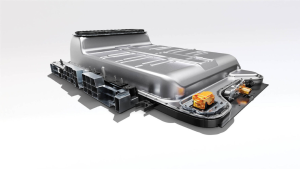Understanding Lithium Battery Chemistry
Introduction
Lithium-ion batteries, which are found in everything from cellphones to electric automobiles, power nearly all modern gadgets. Understanding the chemistry behind lithium batteries is essential for appreciating their performance, safety, and limitations. In this article, we delve into the intricate chemistry of lithium batteries, exploring their composition, operation principles, and key characteristics.

Composition of Lithium Batteries
Anode (Negative Electrode)
Carbon in the form of graphite is commonly used as the anode in lithium-ion batteries. In the process of charging, lithium ions are taken out of the cathode and intercalated into the anode’s graphite structure. Because of this reversible mechanism, lithium ions may move back and forth between the anode and cathode throughout cycles of charge and discharge.
Cathode (Positive Electrode)
The cathode of a lithium-ion battery is composed of a lithium metal oxide, such as lithium cobalt oxide (LiCoO2), lithium manganese oxide (LiMn2O4), or lithium iron phosphate (LiFePO4). As the battery charges, lithium ions are liberated from the cathode and travel in the direction of the graphite anode. The electrochemical circuit is completed when the lithium ions return to the cathode during discharge.
Electrolyte
The electrolyte of a lithium-ion battery is usually a lithium salt that has been dissolved in an organic solvent. Common electrolyte salts include lithium hexafluorophosphate (LiPF6) and lithium bis(trifluoromethanesulfonyl)imide (LiTFSI). The electrolyte facilitates easier transit of lithium ions between the anode and cathode during charge and discharge cycles.
Separator
To prevent direct contact between the two electrodes, a porous separator is positioned between the anode and the cathode through which lithium ions can pass. A microporous polymer membrane, which is permeable to lithium ions yet keeps the electrodes from coming into contact and short circuiting, is usually used as the separator.
Operation Principles
Charging
An external voltage is applied to the battery during charging, which causes lithium ions to flow from the cathode to the anode of the electrolyte. Energy is stored as electrochemical potential at the anode when lithium ions are intercalated into the graphite lattice.
Discharging
During discharging, the battery supplies electrical energy to an external load, such as a smartphone or electric motor. Through the electrolyte, lithium ions go from the anode to the cathode, whereupon they intercalate into the cathode material and release stored energy.
Reversible Process
The reversible nature of lithium-ion intercalation and deintercalation enables the battery to go through several cycles of charging and discharging without suffering any notable damage. However, factors such as electrode materials, electrolyte composition, and operating conditions can affect the long-term stability and lifespan of lithium batteries.
Key Characteristics of Lithium Batteries
High Energy Density
Comparing lithium-ion batteries to other rechargeable battery chemistries like lead-acid and nickel-metal hydride (NiMH) batteries, the former offers a higher energy density. Lithium batteries are perfect for portable gadgets and electric cars because of this, which enables them to store more energy in a lighter and smaller size.
Low Self-Discharge Rate
Because of its low rate of self-discharge, lithium-ion batteries hold their charge for longer periods of time while they are not in use. This makes lithium batteries well-suited for applications where long-term storage and shelf life are important, such as backup power systems and emergency devices.
Fast Charging
Electric cars and other electrical gadgets may be quickly charged thanks to the quicker charging rate of lithium-ion batteries as compared to other battery chemistries. Advances in charging technology, such as fast-charging protocols and high-power chargers, have further improved the charging speed and efficiency of lithium batteries.
Limited Cycle Life
Lithium-ion batteries offer a high energy density, fast charging times, and a shorter cycle life when compared to some other battery chemistries. Repetitive cycles of charging and discharging can erode the electrodes and electrolyte over time, resulting in a progressive reduction in capacity and performance.
Conclusion
Due to its high energy density, quick charging times, and low self-discharge rates, lithium-ion batteries have completely changed the portable electronics and electric vehicle industries. Understanding the chemistry behind lithium batteries provides insights into their operation principles, key characteristics, and potential applications.
As research and development efforts continue to advance, lithium batteries are expected to play an increasingly important role in powering a wide range of devices and systems, from smartphones and laptops to electric vehicles and grid-scale energy storage. By harnessing the power of lithium-ion technology, industries and consumers can benefit from enhanced energy efficiency, performance, and sustainability in the years to come.

-300x300.jpg)




